As we enter 2020, carmaking giant Toyota produces and sells the majority of the world's hybrid cars and SUVs. That may prove to be a problem over the next decade.
The world’s most profitable mass-market carmaker has made no secret of its antipathy toward battery-electric vehicles during the past 10 years.
In 2012, it canceled its plans for a tiny, two-seat electric car—while saying the only suitable use for batteries were low-range urban vehicles. By 2017, that had evolved into the belief that plug-in hybrids would catch on far more quickly than battery-electric vehicles. This year, it said it will work on next-generation solid-state cells with its long-term partner Panasonic; it has claimed in the past that such cells are a necessary prerequisite for volume production of EVs.
In 2010, Toyota’s caution may have been justified as it moved toward 2015 production of the Mirai, its first hydrogen fuel-cell vehicle. That year, the Nissan Leaf launched with an EPA range of 73 miles—and the Tesla Model S was still two years away from production. Today, however, Tesla sells tens of thousands of Model 3s a month, and every major maker in the world is ramping up its EV efforts.
The giant VW Group is one of the few global makers to match Toyota’s annual sales of 10 million vehicles. It now says it hopes to sell 1 million battery-electric cars a year by 2025. A year ago, GM concluded full electric vehicles are the sole way forward and killed off its Volt plug-in hybrid. (It may also have decided explaining and marketing plug-in hybrids is incredibly hard once you get past early adopters.)
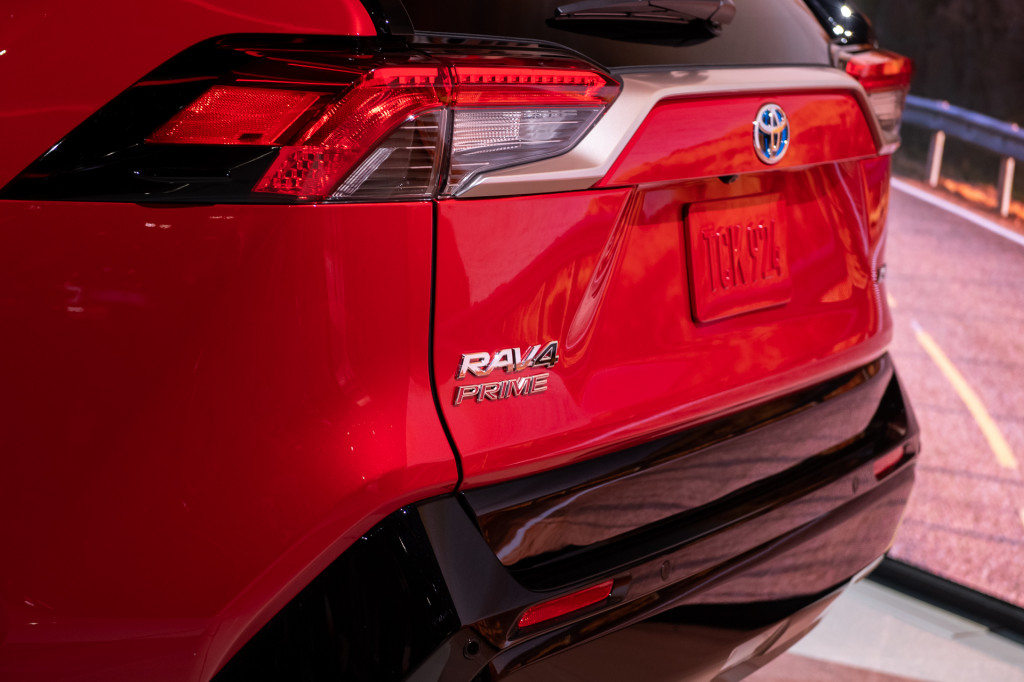
2021 Toyota RAV4 Prime, 2019 LA Auto Show
Enter the RAV4 Prime
Meanwhile, Toyota has just announced its third-ever volume vehicle with a plug, the RAV4 Prime. It’s a plug-in hybrid version of the RAV4 compact SUV, unveiled at last month’s Los Angeles auto show.
The 2021 Toyota RAV4 Prime is a crossover—the form factor every buyer seems to want these days—that offers a projected 39 miles of range. It will also have the second-fastest acceleration of any vehicle in the Toyota lineup. Sounds like a pretty great package, right?
Toyota’s core two-motor hybrid powertrain has been through multiple generations since it launched in 1997. The company has now built close to 15 million hybrids, considerably more than half the hybrids on the world’s roads.
Hybrids yes, plugs no
But the company’s efforts to add plugs to its hybrids have been minimal. The 2012 Prius Plug-In Hybrid had a 4.4-kilowatt-hour battery and only managed 11 miles of range on the EPA test cycle. That compared to the first-generation Chevrolet Volt, with 35 miles or more.
The 2017 Prius Prime was a considerably better car that operated as a pure EV while its battery had charge, but it was still rated at only 25 miles—at a time where the second-generation Volt hit 53 miles.
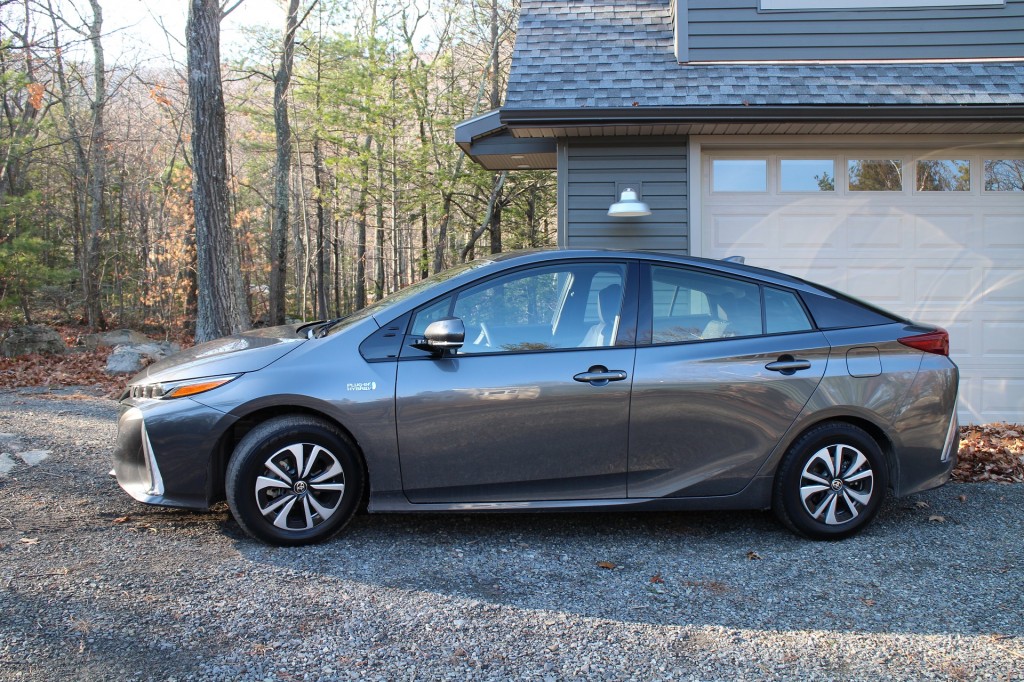
2017 Toyota Prius Prime, Catskill Mountains, NY, Nov 2016
Nine model years after the first plug-in Prius, Toyota seems to be switching its marketing pitch for the new RAV4 plug-in from fuel economy to power. That mirrors Ford’s approach with the Grand Touring versions of its Lincoln Aviator and Corsair luxury SUVs. They’re sold as the most powerful versions, and little is said about their ability to plug in, despite the federal income-tax credits buyers receive for the plug-in feature.
Signs of desperation?
Still, Toyota maintains it has no pure electric cars on the near-term horizon for North America. So what’s driving this recalcitrance? One argument may be that Toyota simply wants to retain its legendary profit margins in mass-volume vehicles. It would almost certainly lose money on its first car with a battery pack providing 200-plus miles of range.
But its hybrid system isn’t cheap either, with a high-voltage battery pack, power electronics, and a pair of electric motors—all pricey components, even in volume. Indeed, hybrid cost reductions may not have come as quickly as Toyota hoped. It’s remains the dominant maker of hybrids, distantly followed by Honda and Ford. But the bulk of the global supply chain still sends most of its output to just one hybrid maker: Toyota.
This past April, the company announced it would grant royalty-free licenses to the intellectual property for its hybrid drivetrain to any maker who wanted them. (Its battery-pack patents were notably not included.) The news attracted little attention, and may interest only smaller makers that can’t afford to develop their own hybrids. Those already include Mazda and Subaru.
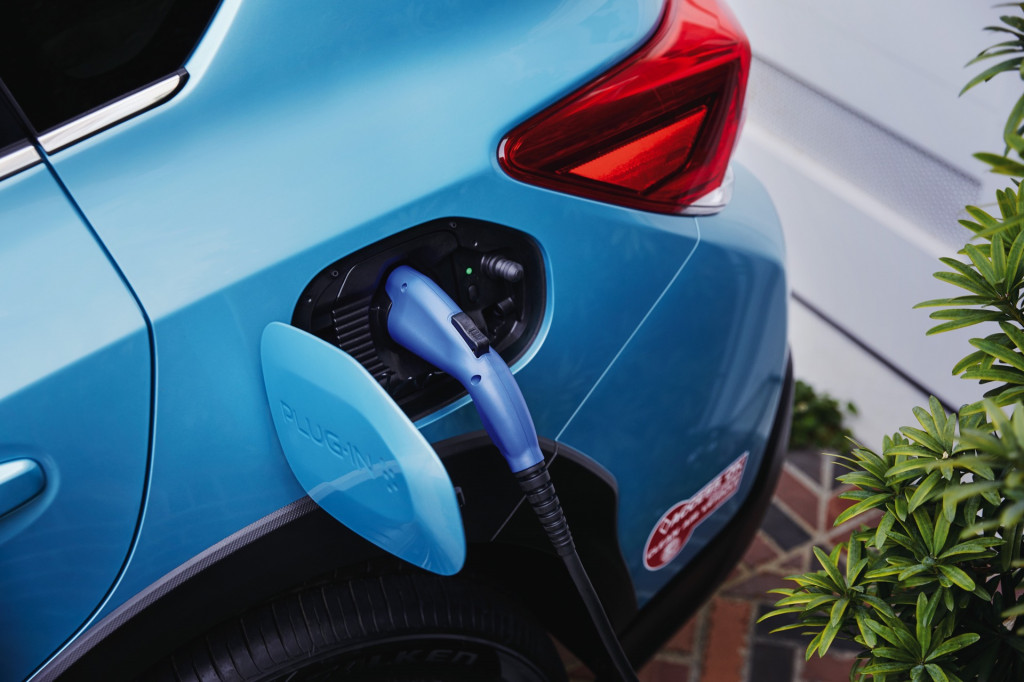
2019 Subaru Crosstrek Hybrid
Viewed through a skeptical lens, though, the Toyota offer can be read as a sign of desperation by a company that expected hybrid technology to be an industry standard after 20 years. That would have expanded the supply base and further lowered its costs, adding to its first-mover advantage.
Instead, many makers proved they could meet tightening emission rules in the U.S. with simpler, less costly technologies: multispeed automatic or continuously-variable transmissions, downsized engines, lightweighting, reduced aerodynamic drag, and other incremental improvements to vehicles running on plain old internal-combustion engines. No hybrids required.
Cheaper batteries, China, death of diesel
Meanwhile, three other factors have further altered the equation. First, battery-cell costs have fallen far faster than anyone predicted In 2010. Second, China announced in September 2017 it would ban the sale of vehicles with combustion engines at some future date.
Finally, the Volkswagen diesel-emission cheating scandal has made battery-electric vehicles the preferred path for European manufacturers facing painfully tough reductions in tailpipe carbon-dioxide emissions. Today, literally dozens of cell-fabrication plants are under construction globally to supply batteries for those millions of EVs each year.
All those factors would seem to point to Toyota adjusting its strategy and adapting to a future in which battery-electric vehicles form part of its lineup. Surely the well-known Prius would make an excellent model to go all-electric?
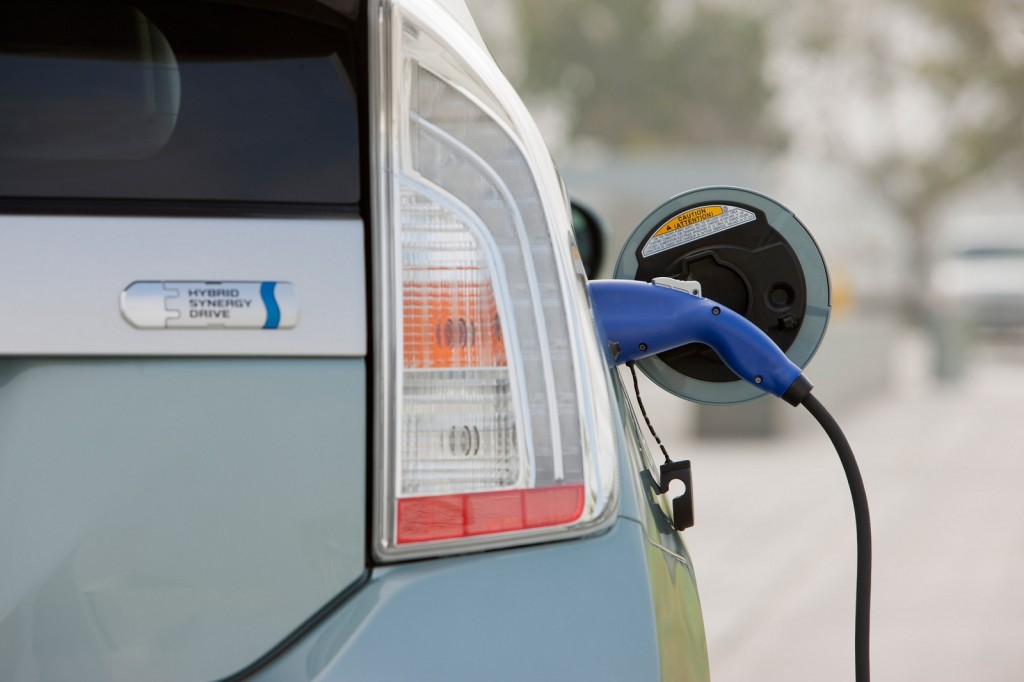
2012 Toyota Prius Plug-In Hybrid - production model
The Innovator’s Dilemma
But that doesn’t appear to be the case. Which leads to the second possible explanation: Toyota may be caught on the horns of the Innovator's Dilemma. That is, it's so devoted to its pioneering hybrid technology it can't see how the landscape is changing and where the world is going.
Simply put, the Innovator’s Dilemma as formulated by Clayton Christensen suggests that very successful and well-regarded companies can do everything "right" but lose their market leadership—or even fail—nonetheless, when new, unexpected competitors emerge and start to take over the market.
The textbook example is the computer disk-drive industry. In the 1970's and 1980's, industry leaders rose and fell as the disk drive they specialized in (14", then 8", then 5.25", and finally 3.5") ascended to prominence and then collapsed into oblivion.
Could this phenomenon be creeping up on Toyota? In fact, that very argument was advanced in a remarkably prescient article by Matthew Klippenstein on this site more than six years ago. It asked, simply, does Toyota’s hybrid leadership blind it to electric cars?
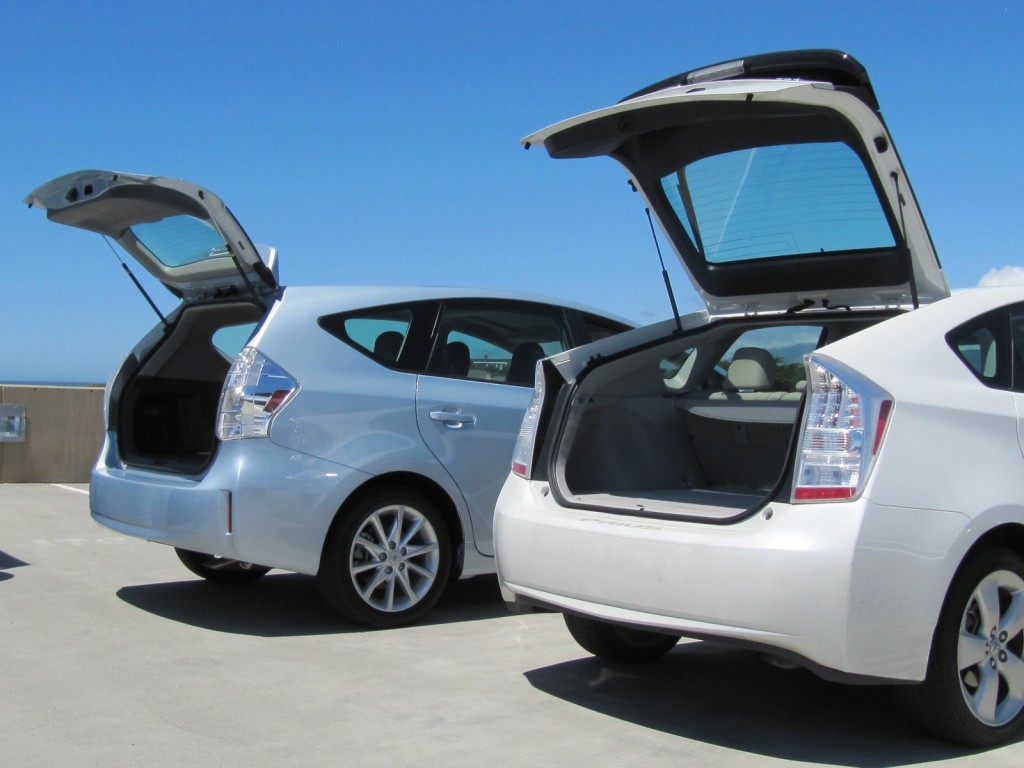
2012 Toyota Prius V station wagon, Half Moon Bay, CA, May 2011
The answer to that question will not be revealed for many years yet. But Toyota’s challenges in selling sufficient numbers of hybrid vehicles in the U.S. market underscore the possibility. With the cost of fuel remaining at relatively low historic levels, fuel efficiency isn’t an important metric for most new-car buyers. Moreover, the CAFE standards in place since 2012 have improved every competitor’s gas mileage.
Prius sales dive
Put simply, Toyota Prius sales have fallen off a cliff: In 2012, four Prius models delivered 237,000 sales. Last year, that total was 87,600—or about one-third the level of six years earlier—including the Prius Prime plug-in hybrid. Through this November, Toyota has sold 63,700 Priuses.
Some volume has been made up by the RAV4 Hybrid, which has sold 44,900 units this year, second only to the Prius. Hybrid Camry and Corolla sedans made up another 38,500. Still, Toyota and Lexus between them sold only 247,000 hybrids in 11 months—just slightly higher than 2012’s Prius sales alone, but spread among twice as many hybrid models now.
A weekend spent with a 2019 Corolla Hybrid sedan earlier this year prompted this thought piece, in fact. The compact hybrid sedan is supremely competent, with all the classic Corolla virtues of reliability and dependability, much-improved underpinnings offering better-than-average handling and roadholding, and real-world fuel economy of a whopping 53 mpg on our usual test cycle.
Toyota maintains the Prius and the Corolla Hybrid will appeal to separate audiences. But it’s not hard to imagine a scenario in which buyers who just want the best possible fuel efficiency switch to Corolla Hybrids in droves to avoid the quirky interior and bizarre styling of the current Prius.

Derrick Kuzak and Takeshi Uchiyamada
Forcing the change in China
Meanwhile, Toyota’s continuing antipathy to cars with plugs is reflected in an ad touting the virtues of the Corolla Hybrid. One benefit? It doesn’t plug in. The theme echoes numerous earlier marketing slaps at EVs from Toyota and Lexus.
Why such stubbornness? Well, consider the background of the chairman of Toyota’s board of directors. Since June 2013, that position has been held by Takeshi Uchiyamada, the lead developer of its hybrid-electric technology—the man known as "the father of the Prius.”
Toyota, nonetheless, will now have to build electric cars in volume—reluctantly, and probably resentfully—in one place: China. It now offers plug-in hybrid versions of its Corolla and Levin models, but they’re sold only there.
Last month it announced a partnership with BYD, which put its first electric cars on the market back in 2009 and is one of the country’s leaders in EVs. The pair will form a new 50-50 joint venture next year to design and develop battery-electric vehicles from the ground up. It will be staffed from both companies’ existing R&D and engineering departments.

2021 Toyota Mirai concept
If we had to bet, though, we’d suggest those cars will be sold only in China. For the next two of three years, we don’t expect to see any battery-electric vehicles from Toyota in North America—despite plans for an array of new EV models from Audi, BMW, Ford, Jaguar, Mercedes-Benz, Nissan, Tesla, Volkswagen, and others.
In the near term, the next generation of the Mirai hydrogen fuel-cell vehicle is a large, rear-wheel-drive sedan as handsome as the current Mirai is homely. For now, Toyota is sticking firmly with hydrogen—not electricity—as its zero-emission technology of choice.
Which is a shame, because the Toyota name on an electric car would likely bring in buyers who wouldn’t consider a Tesla, a GM car, or a Volkswagen EV. But don’t hold your breath for a Toyota EV any time soon. It could be a long wait.
